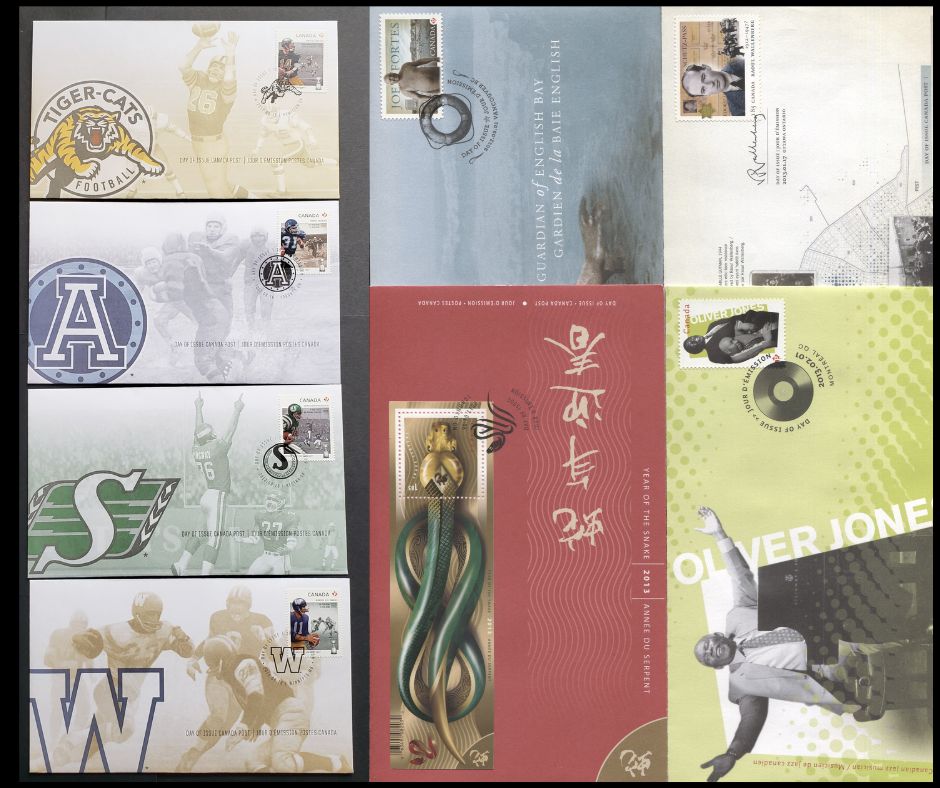Introduction
Stamp collecting has long been a beloved hobby, filled with historical significance, artistic beauty, and the joy of building a unique collection. However, biases within the hobby have often shaped collectors' perceptions of scarcity and desirability for certain stamps and covers. In this blog post, we will explore a prime example of how biases have caused stamp collectors to overlook genuinely scarce and desirable items: Canadian First Day Covers issued since 2000.
The Rise and Fall of First Day Covers
Before 1971, Canadian First Day Covers were a niche market, cherished by devoted collectors and artists who produced limited edition covers with hand-painted and hand-designed cachets. However, the entry of Canada Post into production changed the landscape. The increased competition and mass production capabilities of Canada Post made it difficult for cachet makers to compete, ultimately forcing many of them out of business.
The Popularity Plunge
With Canada Post's involvement, the popularity of First Day Covers plummeted. In the 1970s, vast quantities of covers were produced for each issue, ranging from 250,000 to 300,000 covers, in various stamp configurations (singles, pairs, blocks, plate blocks etc) for each and every issue. These excessive numbers exceeded demand, leading to a decline in perceived desirability. Older and experienced collectors began viewing them as mere junk, further reinforcing biases against First Day Covers.
Consequently, these items are now frequently offered at auction in massive box lots of several thousand covers at a time, with little to no distinction being made between the covers from different issues, and all of them being factored in at little more than 25c per cover.
A Shift in Demand
Over the past two decades, a significant shift occurred. Canada Post responded to the falling demand by reducing the production quantities of First Day Covers, as well as the actual stamps themselves. By 2007, the number of first day covers produced for each issue had dropped to approximately 21,000 for most issues - a considerable decrease compared to previous years. However, this official issue data doesn't tell the whole story.
The Hidden Scarcity
The decrease in production quantities doesn't account for unsold remainders returned by post offices, which are likely destroyed. Postal clerks have confirmed the low demand for First Day Covers, with some post offices even excluding them from their regular inventory, only ordering them for specific customers. Hence, the actual number of surviving covers is significantly smaller than the official figures suggest. This scarcity, overlooked for decades, has made these once-disregarded covers increasingly desirable to collectors.
Future Desirability
The trend observed in the production quantities of modern Canadian stamp issues suggests a broader phenomenon. Over the past 10-15 years, the numbers have dropped drastically, making these stamps and souvenir sheets rarer than ever before. Considering the potential destruction of unsold remainders and the growing digitalization of communication, these items may become sought-after collectibles in the future.
Reassessing the Desirability of First Day Covers and Modern Issues in general
Biases within the stamp collecting hobby have often led collectors to dismiss certain items as common or unworthy. The example of Canadian First Day Covers highlights how decisions made by Canada Post have unintentionally transformed these covers into genuinely scarce and desirable collectibles. It serves as a reminder that scarcity and desirability can evolve over time, and collectors should remain open-minded and reevaluate their perceptions. I am confident that many of the commemorative souvenir sheets, that are being issued in quantities of 50,000 and only up to 250,000 will become highly sought after, as Canada Post is now back to 1930's production levels of the special commemorative issues.
Conclusion
The biases prevalent in stamp collecting have sometimes caused collectors to overlook material that is genuinely scarce and desirable. The case of Canadian First Day Covers demonstrates how decisions made by Canada Post have inadvertently shaped collectors' perceptions and undervalued these items for decades. As the hobby evolves and digitization becomes more prevalent, collectors may rediscover the hidden gems within their collections and appreciate their true scarcity and desirability.


2 comments
In the light of recent announcements (29 May 2024) about Postes Canada being near bankruptcy and the major changes that are being speculated on, what changes do you perceived that could affect us collectors and stamps scarcity and value (Speculative and catalogue)
I quite agree.
Items such as modern Write Me Ring Me sheets used are almost impossible to fund.
However, much of the market of Canadian philately has been artificially contrived by dealers pushing what they can stockpile and make money on while ignoring areas which are scarce which they cannot.
Thus, areas in which supply is extremely limited and dealers cannot gain stock remain unencouraged and priced low in the catalogs.(which are often dealer controlled)
Canadian philately thus is straight jacketed being standardized and misdirected by dealers along narrow paths instead of recognizing many rare and diverse directions available which would add rich diversity and knowledge and sophistication to the hobby.